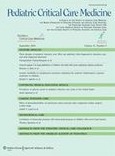SPAD in children with acute liver failure

The paper reports on a retrospective data review of uncontrolled clinical data of an university-based pediatric intensive care unit collaborating with a local center for liver transplantation. Nine children, aged 2 to 15 yrs, who were treated with single-pass albumin dialysis for acute liver failure of various origins under a compassionate-use protocol between 2000 and 2006. All patients met high-urgency liver transplantation criteria. Single-pass albumin dialysis was performed as rescue therapy for children with acute liver failure. The decrease in hepatic encephalopathy (grades 1-4) and the serum levels of bilirubin, bile acids, and ammonium were measured to assess the efficacy of detoxification. As a measure of liver synthesis function, thromboplastin time and fibrinogen were analyzed. The safety of the procedure was assessed by documenting adverse effects on mean arterial blood pressure, platelet count, and clinical course. Seven out of nine patients were bridged successfully to either native organ recovery (n = 1) or liver transplantation (n = 7), one of them twice. Six out of nine patients undergoing single-pass albumin dialysis (ten treatments) survived. In six patients, hepatic encephalopathy could be reduced at least by one degree. Ammonium, bilirubin, and bile acid levels decreased in all patients. One patient had an allergic reaction to albumin. In childhood acute liver failure, treatment with single-pass albumin dialysis was generally well tolerated and seems to be effective in detoxification and in improving blood pressure, thus stabilizing the critical condition of children before liver transplantation and facilitating bridging to liver transplantation. It may be beneficial in avoiding severe neurologic sequelae after acute liver failure and thereby improve survival. Single-pass albumin dialysis is an inexpensive albumin-based detoxification system that is easy to set up and requires little training. Whether and to what extent single-pass albumin dialysis can support children with acute liver failure until native liver recovery remain unclear.